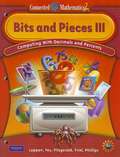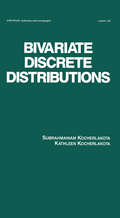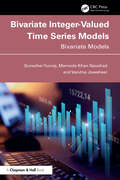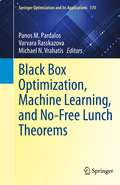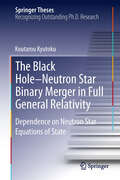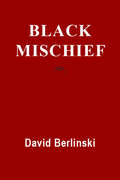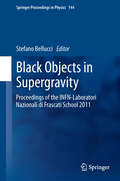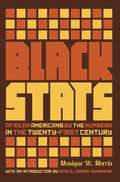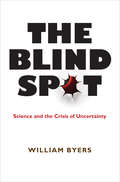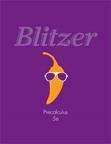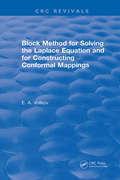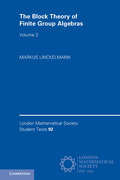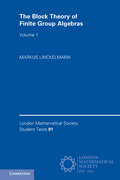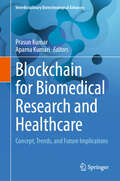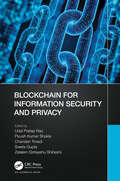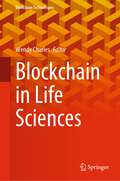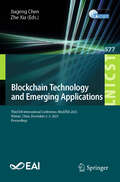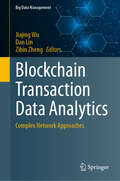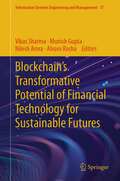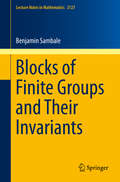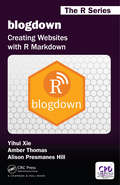- Table View
- List View
Bits and Pieces III Computing With Decimals and Percents
by Glenda Lappan James T. Fey William M. Fitzgerald Susan N. Friel Elizabeth Difanis PhillipsNIMAC-sourced textbook
Bivariate Discrete Distributions (Statistics: A Series Of Textbooks And Monographs #132)
by KocherlakotaThis useful reference/text provides a comprehensive study of the various bivariate discretedistributions that have appeared in the literature- written in an accessible manner thatassumes no more than a first course in mathematical statistics.Supplying individualized treatment of topics while simultaneously exploiting the interrelationshipsof the material, Bivariate Discrete Distributions details the latest techniques ofcomputer simulation for the distributions considered ... contains a general introduction tothe structural properties of discrete distributions, including generating functions, momentrelationships, and the basic ideas of generalizing . . . develops distributions using samplingschemes . .. explores the role of compounding ... covers Waring and "short" distributionsfor use in accident theory ... discusses problems of statistical inference, emphasizing techniquespertinent to the discrete case ... and much more!Containing over 1000 helpful equations, Bivariate Discrete Distributions is <in essential,self-contained reference for applied and general statisticians, and biostatisticians; biometriciansand mathematicians; and researchers in actuarial science, accident theory, environmentalscience, ecology, and the study of wildlife populations; and an outstanding text forupper-level undergraduate and graduate students in these disciplines.
Bivariate Integer-Valued Time Series Models: Bivariate Models
by Sunecher Yuvraj Mamode Khan Naushad Vandna JowaheerThis book proposes some novel models based on the autoregressive and moving average structures under various distributional assumptions of the innovation series for analysing non-stationary bivariate time series of counts.Time series of count responses are recorded for different correlated variables which may be marginally dispersed relative to their means, may exhibit different levels of dispersion and may be commonly influenced by one or more dynamic explanatory variables. Analysis of such type of bivariate time series data is quite challenging and the challenge mounts up further if these time series are non-stationary. This book proposes some bivariate models that allow for different levels of dispersion as well as non-stationarity. Specifically, BINAR(1) and BINMA(1) models under Poisson, NB and COM-Poisson innovations are constructed and tested. Another important contribution of this book is in developing a novel estimation procedure for estimating the parameters of the proposed BINAR(1) and BINMA(1) models. Hence, a new estimation approach based on the GQL is proposed. Monte-Carlo simulations are implemented to assess the performance of the GQL. In some simple cases of stationarity, we also compare the GQL with the other estimation techniques such as CMLE and FGLS.This book is a useful resource for undergraduate students, postgraduate students, researchers and academics in the field of time series models.
Black Box Optimization, Machine Learning, and No-Free Lunch Theorems (Springer Optimization and Its Applications #170)
by Panos M. Pardalos Varvara Rasskazova Michael N. VrahatisThis edited volume illustrates the connections between machine learning techniques, black box optimization, and no-free lunch theorems. Each of the thirteen contributions focuses on the commonality and interdisciplinary concepts as well as the fundamentals needed to fully comprehend the impact of individual applications and problems. Current theoretical, algorithmic, and practical methods used are provided to stimulate a new effort towards innovative and efficient solutions. The book is intended for beginners who wish to achieve a broad overview of optimization methods and also for more experienced researchers as well as researchers in mathematics, optimization, operations research, quantitative logistics, data analysis, and statistics, who will benefit from access to a quick reference to key topics and methods. The coverage ranges from mathematically rigorous methods to heuristic and evolutionary approaches in an attempt to equip the reader with different viewpoints of the same problem.
The Black Hole-Neutron Star Binary Merger in Full General Relativity
by Koutarou KyutokuThis thesis presents a systematic study of the orbital evolution, gravitational wave radiation, and merger remnant of the black hole-neutron star binary merger in full general relativity for the first time. Numerical-relativity simulations are performed using an adaptive mesh refinement code, SimulAtor for Compact objects in Relativistic Astrophysics (SACRA), which adopts a wide variety of zero-temperature equations of state for the neutron star matter. Gravitational waves provide us with quantitative information on the neutron star compactness and equation of state via the cutoff frequency in the spectra, if tidal disruption of the neutron star occurs before the binary merges. The cutoff frequency will be observed by next-generation laser interferometric ground-based gravitational wave detectors, such as Advanced LIGO, Advanced VIRGO, and KAGRA. The author has also determined that the mass of remnant disks are sufficient for the remnant black hole accretion disk to become a progenitor of short-hard gamma ray bursts accompanied by tidal disruptions and suggests that overspinning black holes may not be formed after the merger of even an extremely spinning black hole and an irrotational neutron star.
Black Mischief
by David BerlinskiFrom the Preface to the Second Edition:"This book will not take the casual reader to the cutting edge of research. Nor is it meant to. What I am after in Black Mischief is the moment in which various lines in an intellectual field of force collect themselves into a kind of dense knot...A number of otherwise sympathetic reviewers have suggested that my aim in Black Mischief was somehow to show the persistence of certain outmoded Newtonian forms of thought in economics, or psychology, or biology, or wherever. Not so. My intention has been to explore a tangle of connected concepts."Black Mischief is the cogent and absorbing story of an unusually fertile period in the contemporary science. Irreverent, witty, skeptical, and always informative, it is an anecdotal potpourri of scientific thought and the people who shaped it. Berlinski takes a protean look at the science establishment - as well as the personalities behind the scenes - in such fields as behavioral psychology, linguistics, and economics, and in so doing enlightens and entertains us beyond measure.
Black Objects in Supergravity: Proceedings of the INFN-Laboratori Nazionali di Frascati School 2011 (Springer Proceedings in Physics #144)
by Stefano BellucciThis is the sixth volume in a series of books on the general topics of supersymmetry, supergravity, black holes and the attractor mechanism. The present volume is based upon lectures held in May 2011 at the INFN-Laboratori Nazionali di Frascati School on Black Objects in Supergravity (BOSS2011), directed by Stefano Bellucci, with the participation of prestigious lecturers, including G. Lopes Cardoso, W. Chemissany, T. Ortin, J. Perz, O. Vaughan, D. Turton, L. Lusanna and S. Ferrara. All lectures were at a pedagogical, introductory level, a feature which is reflected in the specific "flavor" of this volume, which also benefited greatly from extensive discussions and related reworking of the various contributions.
Black Stats: African Americans by the Numbers in the Twenty-First Century
by Khalil Gibran Muhammad Monique W. MorrisBlack Stats-a comprehensive guide filled with contemporary facts and figures on African Americans-is an essential reference for anyone attempting to fathom the complex state of our nation. With fascinating and often surprising information on everything from incarceration rates, lending practices, and the arts to marriage, voting habits, and green jobs, the contextualized material in this book will better attune readers to telling trends while challenging commonly held, yet often misguided, perceptions. A compilation that at once highlights measures of incredible progress and enumerates the disparate impacts of social policies and practices, this book is a critical tool for advocates, educators, and policy makers. Black Stats offers indispensable information that is sure to enlighten discussions and provoke debates about the quality of Black life in the United States today-and help chart the path to a better future.There are less than a quarter-million Black public school teachers in the U.S.-representing just 7 percent of all teachers in public schools.Approximately half of the Black population in the United States lives in neighborhoods that have no White residents.In the five years before the Great Recession, the number of Black-owned businesses in the United States increased by 61 percent.A 2010 study found that 41 percent of Black youth feel that rap music videos should be more political.There are no Black owners or presidents of an NFL franchise team.78 percent of Black Americans live within 30 miles of a coal-fired power plant, compared with 56 percent of White Americans.
Blast Mitigation: Experimental and Numerical Studies
by Arun Shukla Mary Ellen Hynes Yapa Ds RajapakseBlast Mitigation: Experimental and Numerical Studies covers both experimental and numerical aspects of material and structural response to dynamic blast loads and its mitigation. The authors present the most up-to-date understanding from laboratory studies and computational analysis for researchers working in the field of blast loadings and their effect on material and structural failure, develop designs for lighter and highly efficient structural members for blast energy absorption, discuss vulnerability of underground structures, present methods for dampening blast overpressures, discuss structural post blast collapse and give attention to underwater explosion and implosion effects on submerged infrastructure and mitigation measures for this environment.
The Blind Spot
by William ByersIn today's unpredictable and chaotic world, we look to science to provide certainty and answers--and often blame it when things go wrong. The Blind Spot reveals why our faith in scientific certainty is a dangerous illusion, and how only by embracing science's inherent ambiguities and paradoxes can we truly appreciate its beauty and harness its potential. Crackling with insights into our most perplexing contemporary dilemmas, from climate change to the global financial meltdown, this book challenges our most sacredly held beliefs about science, technology, and progress. At the same time, it shows how the secret to better science can be found where we least expect it--in the uncertain, the ambiguous, and the inevitably unpredictable. William Byers explains why the subjective element in scientific inquiry is in fact what makes it so dynamic, and deftly balances the need for certainty and rigor in science with the equally important need for creativity, freedom, and downright wonder. Drawing on an array of fascinating examples--from Wall Street's overreliance on algorithms to provide certainty in uncertain markets, to undecidable problems in mathematics and computer science, to Georg Cantor's paradoxical but true assertion about infinity--Byers demonstrates how we can and must learn from the existence of blind spots in our scientific and mathematical understanding. The Blind Spot offers an entirely new way of thinking about science, one that highlights its strengths and limitations, its unrealized promise, and, above all, its unavoidable ambiguity. It also points to a more sophisticated approach to the most intractable problems of our time.
The Blind Spot: Science and the Crisis of Uncertainty
by William ByersIn today's unpredictable and chaotic world, we look to science to provide certainty and answers--and often blame it when things go wrong. The Blind Spot reveals why our faith in scientific certainty is a dangerous illusion, and how only by embracing science's inherent ambiguities and paradoxes can we truly appreciate its beauty and harness its potential. Crackling with insights into our most perplexing contemporary dilemmas, from climate change to the global financial meltdown, this book challenges our most sacredly held beliefs about science, technology, and progress. At the same time, it shows how the secret to better science can be found where we least expect it--in the uncertain, the ambiguous, and the inevitably unpredictable. William Byers explains why the subjective element in scientific inquiry is in fact what makes it so dynamic, and deftly balances the need for certainty and rigor in science with the equally important need for creativity, freedom, and downright wonder. Drawing on an array of fascinating examples--from Wall Street's overreliance on algorithms to provide certainty in uncertain markets, to undecidable problems in mathematics and computer science, to Georg Cantor's paradoxical but true assertion about infinity--Byers demonstrates how we can and must learn from the existence of blind spots in our scientific and mathematical understanding. The Blind Spot offers an entirely new way of thinking about science, one that highlights its strengths and limitations, its unrealized promise, and, above all, its unavoidable ambiguity. It also points to a more sophisticated approach to the most intractable problems of our time.
Blitzer Precalculus (Fifth Edition)
by Robert BlitzerBlitzer presents the full scope of mathematics with vivid applications in real-life situations. Blitzer's usage of pop-culture and up-to-date references to connect math to students’ lives make students engaged.
The Bloch-Kato Conjecture for the Riemann Zeta Function
by John Coates A. Raghuram Anupam Saikia R. SujathaThere are still many arithmetic mysteries surrounding the values of the Riemann zeta function at the odd positive integers greater than one. For example, the matter of their irrationality, let alone transcendence, remains largely unknown. However, by extending ideas of Garland, Borel proved that these values are related to the higher K-theory of the ring of integers. Shortly afterwards, Bloch and Kato proposed a Tamagawa number-type conjecture for these values, and showed that it would follow from a result in motivic cohomology which was unknown at the time. This vital result from motivic cohomology was subsequently proven by Huber, Kings, and Wildeshaus. Bringing together key results from K-theory, motivic cohomology, and Iwasawa theory, this book is the first to give a complete proof, accessible to graduate students, of the Bloch-Kato conjecture for odd positive integers. It includes a new account of the results from motivic cohomology by Huber and Kings.
Block Method for Solving the Laplace Equation and for Constructing Conformal Mappings (CRC Press Revivals)
by Evgenii A. VolkovThis book presents a new, efficient numerical-analytical method for solving the Laplace equation on an arbitrary polygon. This method, called the approximate block method, overcomes indicated difficulties and has qualitatively more rapid convergence than well-known difference and variational-difference methods. The block method also solves the complicated problem of approximate conformal mapping of multiply-connected polygons onto canonical domains with no preliminary information required. The high-precision results of calculations carried out on the computer are presented in an abundance of tables substantiating the exponential convergence of the block method and its strong stability concerning the rounding-off of errors.
The Block Theory of Finite Group Algebras: Volume 2 (London Mathematical Society Student Texts #91)
by Markus LinckelmannThis is a comprehensive introduction to the modular representation theory of finite groups, with an emphasis on block theory. The two volumes take into account classical results and concepts as well as some of the modern developments in the area. Volume 1 introduces the broader context, starting with general properties of finite group algebras over commutative rings, moving on to some basics in character theory and the structure theory of algebras over complete discrete valuation rings. In Volume 2, blocks of finite group algebras over complete p-local rings take centre stage, and many key results which have not appeared in a book before are treated in detail. In order to illustrate the wide range of techniques in block theory, the book concludes with chapters classifying the source algebras of blocks with cyclic and Klein four defect groups, and relating these classifications to the open conjectures that drive block theory.
The Block Theory of Finite Group Algebras: Volume 1 (London Mathematical Society Student Texts #91)
by Markus LinckelmannThis is a comprehensive introduction to the modular representation theory of finite groups, with an emphasis on block theory. The two volumes take into account classical results and concepts as well as some of the modern developments in the area. Volume 1 introduces the broader context, starting with general properties of finite group algebras over commutative rings, moving on to some basics in character theory and the structure theory of algebras over complete discrete valuation rings. In Volume 2, blocks of finite group algebras over complete p-local rings take centre stage, and many key results which have not appeared in a book before are treated in detail. In order to illustrate the wide range of techniques in block theory, the book concludes with chapters classifying the source algebras of blocks with cyclic and Klein four defect groups, and relating these classifications to the open conjectures that drive block theory.
Blockchain for Biomedical Research and Healthcare: Concept, Trends, and Future Implications (Interdisciplinary Biotechnological Advances)
by Prasun Kumar Aparna KumariBlockchain is a new type of technology that combines and secures information exchange between different stakeholders such as medical practitioners, patients, healthcare providers, and other applicable parties. Among them, Blockchain Technology is one of the most important areas in the bioinformatics application of biomedical research and healthcare systems utilizing unique requirements and integration features. All the chapters are written by experts and researchers working in various areas of the biomedical and healthcare domain and they also dive into one of the most overlooked methodological, practical, and moral questions to secure and handle the enormous amount of data being generated from IoT-enabled biomedical and healthcare systems. In the beginning, this book presents an overview and then discusses open issues, challenges, and applicability aspect of Blockchain technology in healthcare. Then, this book presents a variety of perspectives on the most pressing questions in the field, for example: how IoT can connect billions of biomedical and healthcare information; how the blockchain-based secure access control mechanisms in biomedical and healthcare work; how to address the Quality-of-Service (QoS) and real-time accessibility requirements for healthcare applications; and how to ensure communication with efficiency. Also, it discusses Blockchain for IoT-enabled healthcare systems and presents a comparative analysis with respect to various performance evaluation metrics too.
Blockchain for Information Security and Privacy
by Udai Pratap Rao Piyush Kumar Shukla Chandan Trivedi Sweta Gupta Zelalem Sintayehu ShibeshiDistributed and peer-to-peer (P2P) applications are increasing daily, and cyberattacks are constantly adopting new mechanisms to threaten the security and privacy of users in these Internet of Things (IoT) environments. Blockchain, a decentralized cryptographic-based technology, is a promising element for IoT security in manufacturing, finance, healthcare, supply chain, identity management, e-governance, defence, education, banking, and trading. Blockchain has the potential to secure IoT through repetition, changeless capacity, and encryption. Blockchain for Information Security and Privacy provides essential knowledge of blockchain usage in the mainstream areas of security, trust, and privacy in decentralized domains. This book is a source of technical information regarding blockchain-oriented software and applications. It provides tools to researchers and developers in both computing and software engineering to develop solutions and automated systems that can promote security, trust, and privacy in cyberspace. FEATURES Applying blockchain-based secured data management in confidential cyberdefense applications Securing online voting systems using blockchain Safeguarding electronic healthcare record (EHR) management using blockchain Impacting security and privacy in digital identity management Using blockchain-based security and privacy for smart contracts By providing an overview of blockchain technology application domains in IoT (e.g., vehicle web, power web, cloud internet, and edge computing), this book features side-by-side comparisons of modern methods toward secure and privacy-preserving blockchain technology. It also examines safety objectives, efficiency, limitations, computational complexity, and communication overhead of various applications using blockchain. This book also addresses the combination of blockchain and industrial IoT. It explores novel various-levels of information sharing systems.
Blockchain in Life Sciences (Blockchain Technologies)
by Wendy CharlesThis book highlights the latest advances on the implementation and adaptation of blockchain technologies in real-world scientific, biomedical, and data applications. It presents rapid advancements in life sciences research and development by applying the unique capabilities inherent in distributed ledger technologies. The book unveils the current uses of blockchain in drug discovery, drug and device tracking, real-world data collection, and increased patient engagement used to unlock opportunities to advance life sciences research. This paradigm shift is explored from the perspectives of pharmaceutical professionals, biotechnology start-ups, regulatory agencies, ethical review boards, and blockchain developers. This book enlightens readers about the opportunities to empower and enable data in life sciences.
Blockchain Technology and Emerging Applications: Third EAI International Conference, BlockTEA 2023, Wuhan, China, December 2-3, 2023, Proceedings (Lecture Notes of the Institute for Computer Sciences, Social Informatics and Telecommunications Engineering #577)
by Jiageng Chen Zhe XiaThis book constitutes the refereed proceedings of the Third International Conference on Blockchain Technology and Emerging Applications, BlockTEA 2023, held in December 2-3, 2023 in Wuhan, China. The 10 regular papers presented were carefully reviewed and selected from 41 submissions. Blockchain technology has been emerging as a potential technology to be applied in various domains, including finance, computer science, electronic engineering, agriculture, healthcare and more. The blockchain-based applications are able to aid the current systems and networks by leveraging the benefits provided by blockchain technology, such as a decentralized, immutable, and cryptographically secured ledger.
Blockchain Transaction Data Analytics: Complex Network Approaches (Big Data Management)
by Jiajing Wu Dan Lin Zibin ZhengBlockchain, a decentralized ledger technology based on cryptographic algorithms, ensures the creation of immutable and tamper-proof ledgers in decentralized systems. The transparent nature of blockchain allows public access to transaction records, providing unprecedented opportunities for blockchain data analytics and mining. The primary value of blockchain transaction data analytics lies in two aspects: 1) by delving into the details of blockchain transaction data, we can extensively explore various types of user behavior patterns and the evolutionary process of blockchain transaction networks; and 2) analyzing blockchain transaction data aids in identifying illicit activities, offering effective regulatory solutions for the establishment of a healthier blockchain ecosystem. This book focuses on data analytics based on network-based approaches, providing a comprehensive analysis of blockchain data analytics problems, key technologies, and future directions. Different from most existing book, this book takes a unique approach to blockchain data analysis research, focusing on data analytics based on network-based approaches. Leveraging network analysis methods, the book concentrates on three main aspects of blockchain transaction data analytics and mining: (1) transaction network modelling and pattern mining, including macro and micro-level account attributes, money laundering network patterns, and network evolution patterns; (2) account business classification, such as account label prediction based on graph neural networks; and (3) anomaly behavior identification, covering phishing detection, risk scoring, and transaction tracking. Designed as a valuable resource for students, researchers, engineers, and policymakers in various fields related to blockchain data analytics, this book holds significant importance for understanding blockchain transaction behavior and addressing the detection of illicit activities in the blockchain space.
Blockchain’s Transformative Potential of Financial Technology for Sustainable Futures (Information Systems Engineering and Management #17)
by Vikas Sharma Munish Gupta Nilesh Arora Alvaro Rocha"Blockchain's Transformative Potential of Financial Technology for Sustainable Futures" delves into the groundbreaking impact of blockchain technology on the financial sector, highlighting its potential to foster sustainable development. This comprehensive volume brings together a diverse array of experts who explore how blockchain can revolutionize financial technology (FinTech) by enhancing transparency, efficiency, and inclusivity. The book examines blockchain's role in promoting financial inclusion, providing secure and accessible financial services to underserved populations. By bridging gaps in the current financial system, blockchain empowers individuals and communities, driving economic growth and resilience. Additionally, it addresses the environmental benefits of blockchain, showcasing innovative solutions like decentralized energy markets and transparent supply chains that contribute to sustainability. Readers will gain insights into real-world applications of blockchain, supported by case studies and in-depth analyses. The book also navigates the complex regulatory and ethical landscape, offering guidance on harnessing blockchain's potential responsibly. "Blockchain's Transformative Potential of Financial Technology for Sustainable Futures" is an essential resource for professionals, researchers, and policymakers interested in the future of FinTech and sustainable development. It serves as a catalyst for further research, dialogue, and collaboration, inspiring a new era of financial innovation and sustainability.
Blocks of Finite Groups and Their Invariants (Lecture Notes in Mathematics #2127)
by Benjamin SambaleProviding a nearly complete selection of up-to-date methods and results on block invariants with respect to their defect groups, this book covers the classical theory pioneered by Brauer, the modern theory of fusion systems introduced by Puig, the geometry of numbers developed by Minkowski, the classification of finite simple groups, and various computer assisted methods. In a powerful combination, these tools are applied to solve many special cases of famous open conjectures in the representation theory of finite groups. Most of the material is drawn from peer-reviewed journal articles, but there are also new previously unpublished results. In order to make the text self-contained, detailed proofs are given whenever possible. Several tables add to the text's usefulness as a reference. The book is aimed at experts in group theory or representation theory who may wish to make use of the presented ideas in their research.
blogdown: Creating Websites with R Markdown (Chapman & Hall/CRC The R Series)
by Alison Hill Yihui Xie Amber Thomasblogdown: Creating Websites with R Markdown provides a practical guide for creating websites using the blogdown package in R. In this book, we show you how to use dynamic R Markdown documents to build static websites featuring R code (or other programming languages) with automatically rendered output such as graphics, tables, analysis results, and HTML widgets. The blogdown package is also suitable for technical writing with elements such as citations, footnotes, and LaTeX math. This makes blogdown an ideal platform for any website designed to communicate information about data science, data analysis, data visualization, or R programming. Note that blogdown is not just for blogging or sites about R; it can also be used to create general-purpose websites. By default, blogdown uses Hugo, a popular open-source static website generator, which provides a fast and flexible way to build your site content to be shared online. Other website generators like Jekyll and Hexo are also supported. In this book, you will learn how to: Build a website using the blogdown package; Create blog posts and other website content as dynamic documents that can be easily edited and updated; Customize Hugo templates to suit your site’s needs; Publish your website online; Migrate your existing websites to blogdown and Hugo. Yihui Xie is a software engineer at RStudio. He has authored and co-authored several R packages, including knitr, rmarkdown, bookdown, blogdown, shiny, xaringan, and animation. He has published two other books, Dynamic Documents with R and knitr and bookdown: Authoring Books and Technical Documents with R Markdown. Amber Thomas is a data journalist and "maker" at the online publication of visual essays: The Pudding (https://pudding.cool). Her educational background was marine biology, but she has a strong love of data analysis, visualization, and storytelling. Alison Presmanes Hill is an Associate Professor of Pediatrics at Oregon Health & Science University, where she teaches Computer Science courses on data analysis, data science, and visualization. Her research focuses on using computational methods to study the development of children with neurodevelopmental disorders, in particular Autism Spectrum Disorders.
